Home>Furniture>Leather Furniture: Choosing & Caring For Yours
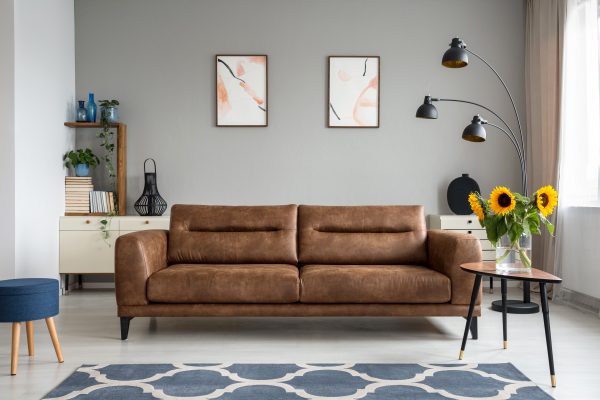
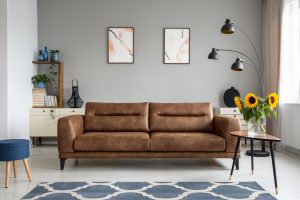
Furniture
Leather Furniture: Choosing & Caring For Yours
Modified: December 6, 2023
Everything you need to know about leather furniture in one article! Easily clean and care for yours with these clear-cut methods.
(Many of the links in this article redirect to a specific reviewed product. Your purchase of these products through affiliate links helps to generate commission for Storables.com, at no extra cost. Learn more)
As you probably know, the term “leather” refers to the cattle hides that have been tanned and cured. However, things can get a bit trickier after that. If you’ve never gone shopping for leather furniture, you might not be familiar with the different terms like grain, genuine leather, aniline, and more.
Fortunately, we are here to walk you through the processes of getting the perfect leather furniture and maintenance of such items.
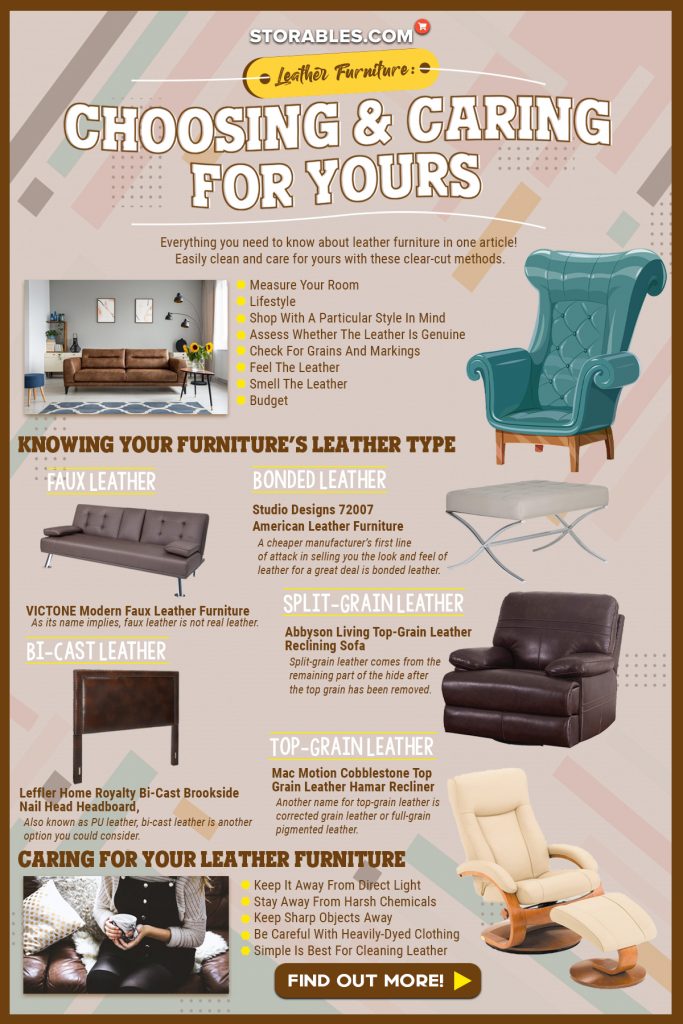
Choosing Leather Furniture
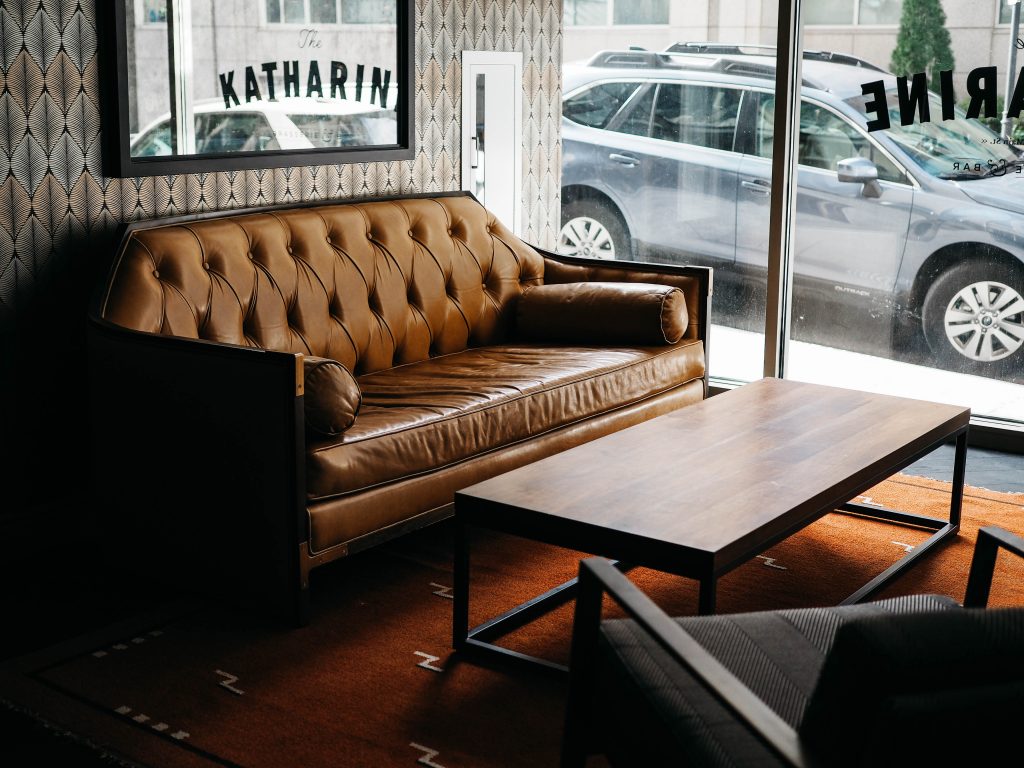
Leather furniture features a durable texture that usually improves with age and tends to give your home a classic look and feel. Choosing the best piece of leather furniture depends on your budget, tastes, and needs. Of these various factors, the most crucial one would arguably be your lifestyle.
Read more: How To Store Leather Furniture
Measure Your Room
The first step in choosing leather furniture is to measure your room. This will help you to remain focused on finding the best leather furniture that will fit into your space. Imagine buying a large brown leather sofa for a small room: it could make your room feel cramped and visually overwhelming.
Lifestyle
Pets, kids, and your interests have a tremendous impact on your choices for leather furniture. While you can definitely make things work with any type of leather, you should read up on the different leather grains and dyes to make a better decision. The good thing about leather is that it tends to be a lot less porous than fabric, so it won’t absorb any spillages at quite the same rate.
Shop With A Particular Style In Mind
Your personal taste and the room’s natural architecture have a part to play in the style of leather furniture you decide to purchase. If you need a piece of leather furniture with a more traditional, rustic, or timeless style, a high-grade leather type like full aniline would be your best option.
Assess Whether The Leather Is Genuine
Inspect the leather furniture to see if it’s a single piece or several pieces of leather stitched together. The average size of a usable hide is 72 inches by 52 inches, which means that a single piece of leather that manages to cover a piece of large furniture is most likely fake.
Check For Grains And Markings
If the leather used for furniture is smooth and uniform, it is either low-quality or fake. Genuine leather has natural markings and variations — even most high-grade leathers like aniline leather feature visible markings, wrinkles, or scars.
Feel The Leather
Leathers of higher quality are usually softer and warmer to the touch. Moreover, pigmented and leathers of lower quality will feel firmer and cooler when touched.
Smell The Leather
To identify a genuine and high-quality leather, watch out for a distinctive and appealing aroma. Fake and low-quality leathers can be identified by their unpleasant chemical smells.
Budget
If you’re looking for the best leather type for your living room, you can opt for a high-grade leather. The classic look and feel of high-grade leathers make them the perfect showpieces. Alternatively, go for low-grade furniture if you’re on a tight budget. High-grade leather furniture usually cost up to ten times the price of low-grade leather furniture.
For those seeking a compromise between quality and price, semi-aniline leather is the best option. It has almost the same quality as full aniline leather but is way more affordable.
Knowing Your Furniture’s Leather Type
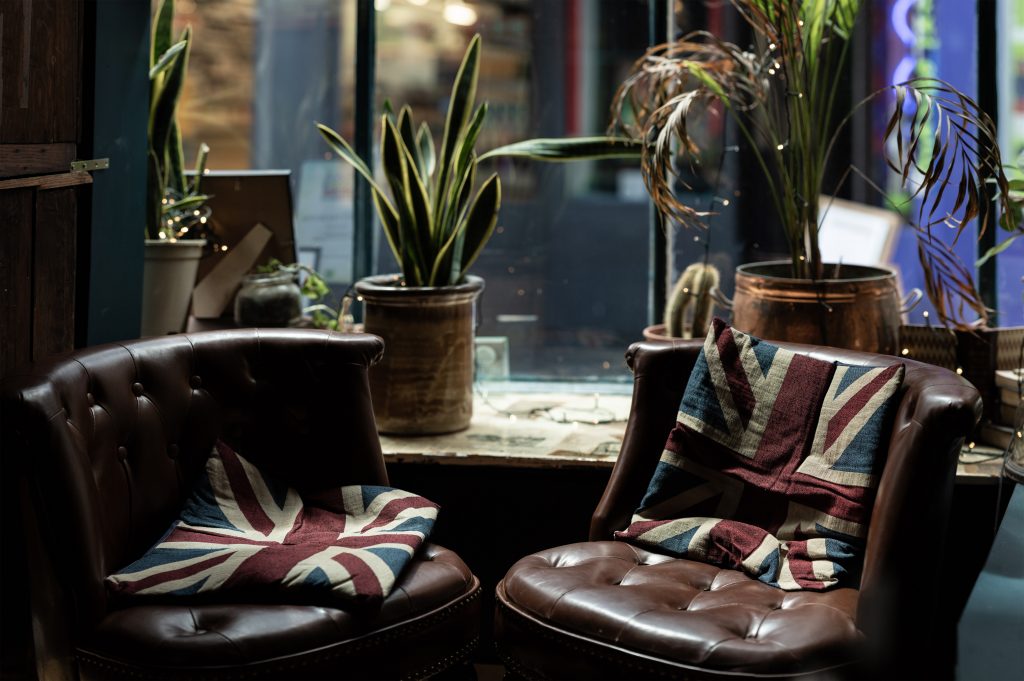
Leather grain is one vital aspect that can’t be ignored. Contrary to popular belief, top-grain leathers aren’t the best leathers – the term “top grain” is merely used to describe leather that has had its uppermost layer sanded off and had a frame grain stamped into the hide during the tanning process. To ensure you’re purchasing the best grain, choose the leather that retains the original animal grain. Here are some of the different types of leather used in making leather furniture.
Faux Leather
As its name implies, faux leather is not real leather. This type of leather has come a long way since it was introduced to the market. Types of faux leather include PU faux leather and PVC faux leather. This is the cheapest out of all the leather types available. It looks like the real deal but is far more durable.
Bonded Leather
A cheaper manufacturer’s first line of attack in selling you the look and feel of leather for a great deal is bonded leather. To create bonded leather, they mix leather scraps and fibers then use adhesives or other kinds of bonding materials to form it into a roll. After the rolls have been created, they go under drying equipment to reduce their moisture levels.
Some industry experts do not consider this leather to be real leather because it only contains 10 to 17 percent leather fiber. However, it cannot be denied that bonded leather has its advantages: the material is very durable, it is suitable for people allergic to genuine leather as it contains low levels of formaldehyde, and it’s a lot cheaper than real leather.
Bi-Cast Leather
Also known as PU leather, bi-cast leather is another option you could consider. Before it gets processed, the hide is cut horizontally into layers consisting of the top grain and every split below that. The gluing of a sheet of polyurethane color to a split-grain brings about bi-cast leather.
Characteristics-wise, bi-cast leather is quite similar to bonded leather. Bi-cast can serve as a viable alternative for people that want the look of genuine leather for cheaper. One benefit of bi-cast leather is that it can be cleaned easily. You won’t run into any staining issues that are common with upholstered furniture with your bi-cast furniture.
Split-Grain Leather
Split-grain leather comes from the remaining part of the hide after the top grain has been removed. It’s a lot cheaper than top-grain leather due to its fragility if not handled with care.
Although split-grain leather does possess all the characteristics of top-grain leather due to differences in processing, it is still 100% real leather. Unlike the shiny appearance of traditional top-grain leather, the initial texture of split-grain leather tends to be fuzzy or suede-like. Split-grain leather must undergo various processes to achieve a similar appearance and feel as its top-grain counterpart.
Top-Grain Leather
Another name for top-grain leather is corrected grain leather or full-grain pigmented leather. It is the toughest amongst all leather types and is usually taken from the hide’s outer layers. Unlike full-grain leather, top-grain leather is usually buffed to remove any imperfections. Moreover, it is durable and has an incredibly soft feel.
The smoothest, most natural, and the best leather furniture you can buy is made from top-grain. Like human fingerprints, each hide that is used for production is unique. Real top-grain leathers consist of 12 to 14 percent water, so they acclimate quickly to the body’s temperature.
Top grain leather can be separated into two different grades, namely aniline leather (or full aniline leather) and semi-aniline leather.
Aniline Or Full Aniline Leather
Popularly known as the most natural leather, aniline leather does not have any protective coatings nor undergoes any treatment that alters its natural characteristics. This, however, also means that it is easy to stain.
Leather soaked in aniline dye is known as full aniline leather. It is soft and supple in texture and retains the original hide’s natural grain, markings, and color variations.
Over time, this buttery-soft yet supple leather will develop into a unique vintage patina that even designers and influencers covet. However, do note that scratches, direct light, and stains can damage the leather if not properly cared for.
Semi-Aniline Leather
After the dying process, a thin layer of wax is applied to some semi-aniline leathers. Uniformity in color throughout the leather is possible thanks to a second application of wax. This second layer makes semi-aniline leathers a lot less porous and more durable.
When placed in direct sunlight, this leather will continue to maintain its color even after many years.
Nubuck
Nubuck is a type of rawhide leather that has undergone either sanding or buffing, which, in turn, gives it a look similar to that of suede and velvet. Since its exterior is sprayed with a finishing agent, Nubuk features a largely uniform appearance. Compared to full-grain leather, it is much cheaper but requires careful maintenance due to its fragile nature.
Full-Grain Leather
Full-grain leather retains the original imprints of the hide of the animal. It is a type of leather that is formed by the removal of hair on the hide’s skin. Rather than using just certain layers of the hide for production, the entire hide is used instead.
Notwithstanding minor imperfections, this leather tends to look and feel better with time. Full-grain leather is known to be the most expensive leather used for making furniture.
Royalin
Royalin leather is one of the many leather types exclusive to Ekornes, the European furniture-maker. It is composed of natural pebbled grain and is varied in its markings. Royalin leather is a good option for buyers who want a top-notch leather that is comfortable.
Caring For Your Leather Furniture
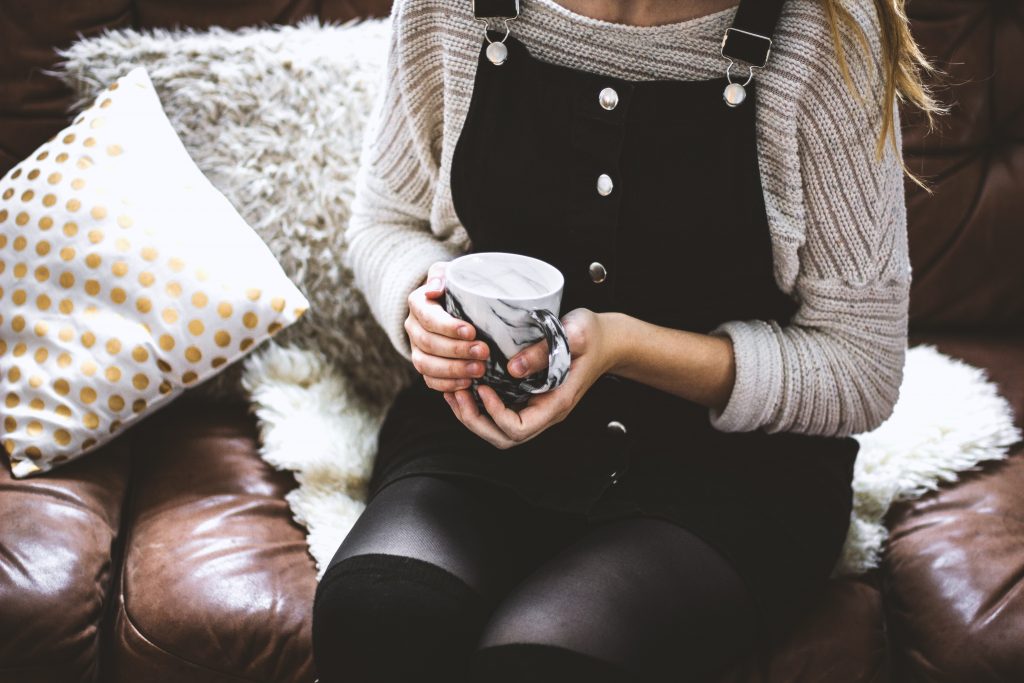
Like your skincare routine, your leather furniture should be given special care to continue looking its best. While there aren’t any giant Hannibal-style sheet masks available, there are ways to wash and maintain your leather furniture sets so it continues looking inviting and clean.
Like how it is with other fabrics, damage to your leather furniture is mostly irreversible. You’ll likely end up with a permanent reminder of why you can’t have beautiful things in your home. Care for your leather furniture from the very first day, and here are some tips that you may find helpful:
Keep It Away From Direct Light
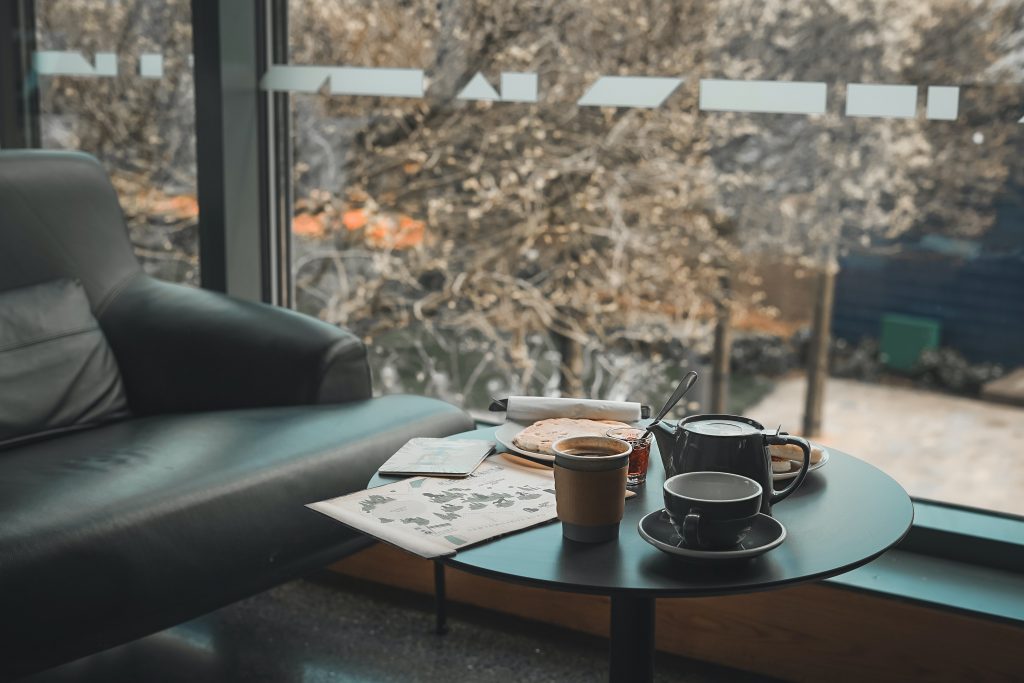
Discoloration and fading are caused by direct light from lamps or sunlight. Your leather furniture can become discolored when exposed to excess light. Treat it as a sort of vampire, and add shades wherever possible. Additionally, it would be best if you were to protect your leather furniture from sources of direct heat like fireplaces and heaters.
Stay Away From Harsh Chemicals
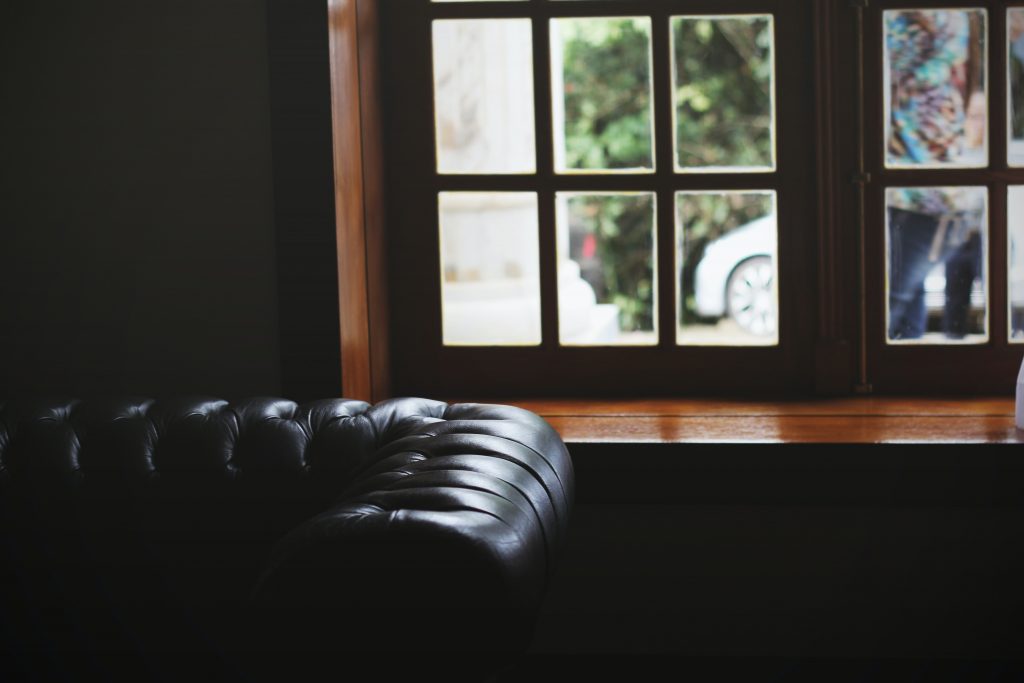
You’ve just purchased a real leather couch and want it to last for as long as possible. Well, heads-up as the finish of your couch may potentially be ruined by chemical detergents, treatments, and polishes. Chemicals can also negatively affect its texture and color in the long run. Treat your couch kindly by opting for gentler cleaning alternatives.
Keep Sharp Objects Away

While leather is durable, it is by no means an invincible material. Light scratches or marks can be buffed out with gentle heat and a bit of rubbing. However, deep scratches and cuts will likely remain on your leather furniture.
Be Careful With Heavily-Dyed Clothing
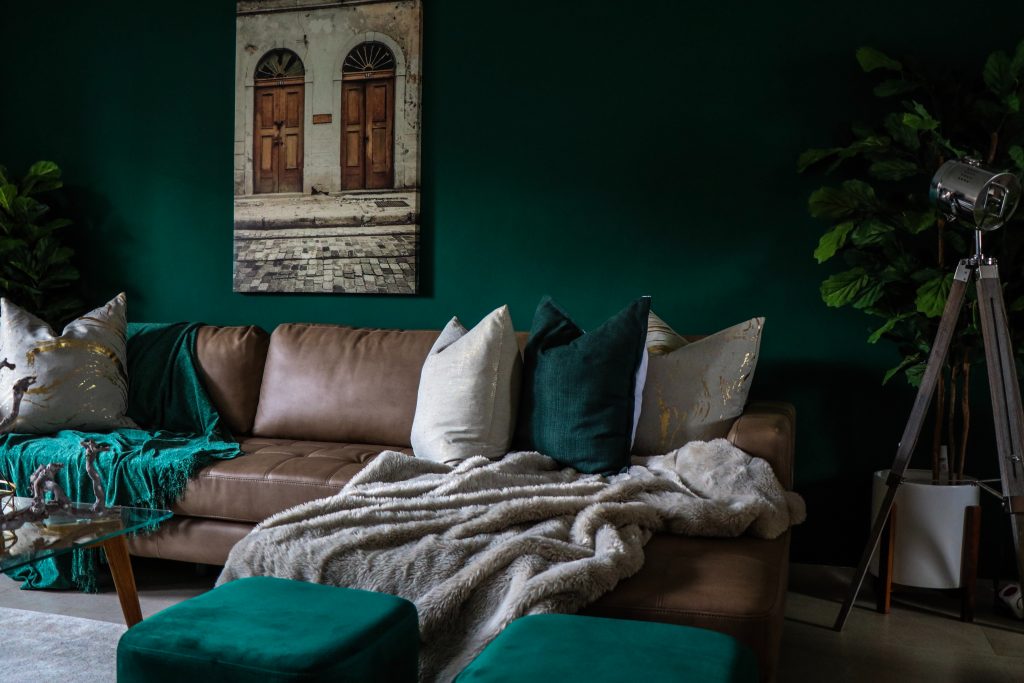
If you’ve ever washed new black jeans with lighter-colored tops, you’ll know how easily dye can transfer from garment to garment – this also applies for garment to leather furniture. Be aware of how easily certain clothes can stain and opt for other options when sitting on your leather furniture.
Simple Is Best For Cleaning Leather
Get rid of dust and debris by vacuuming your leather furniture regularly and using a barely-moist cloth to wipe it once you’re done. If you accidentally spill liquids onto your furniture, try your best to shake off whatever you can then gently dab the stain with a cloth. Never rub your furniture while cleaning because it can lead to cracking, color transfer, or rub marks.
4. Dealing With Damaged Leather Furniture

No matter how hard you try to keep your furniture in pristine condition, it’s almost impossible to avoid getting a single scratch, tear, or water stain on it at some point. Damage can be caused by many factors – overenthusiastic kids, hyperactive pets, etc. Heck, even supposedly “spill-and-tear-resistant” upholstery can get damaged.
The following section covers common causes of leather furniture damage and some leather furniture repair methods you can try.
How To Clean Leather Furniture
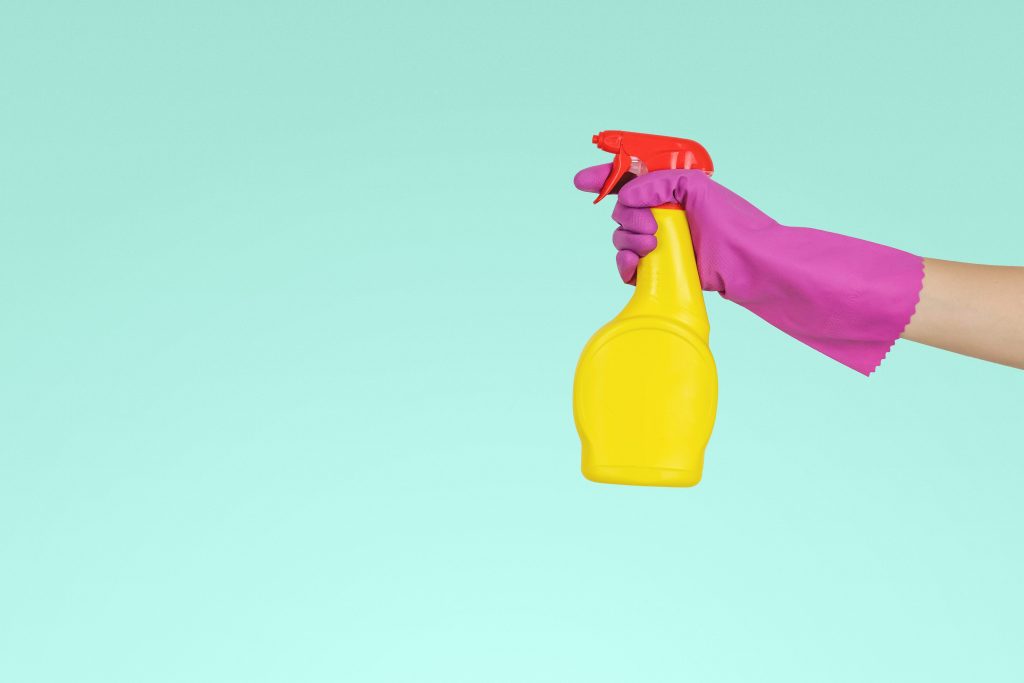
Prior to applying the treatment to the entire piece of furniture, ensure that you test the product on a hidden area before moving on to a spot in plain sight. This allows room for errors in case any discoloration happens in the first phase.
Grease Stains
Baking soda or cornstarch should be sprinkled onto the stain, allowed to stay there for a few hours, and then dusted off. Do not apply water to the spot under any circumstances.
Permanent Marker And Newspaper Print
Lightly spray aerosol hairspray on the stain. Once done, use a microfiber cloth to wipe it off.
Mold And Mildew
Water and rubbing alcohol should be mixed in equal parts and applied to the affected area.
Ink Stains
Dip a Q-tip or cotton wool in rubbing alcohol and apply it to the area stained with ink.
Dark Stains
Prepare a paste of tartar and lemon juice mixed in equal proportions. Once done, the paste should be spread onto the stain and allowed to stay for 10 minutes. To wipe it off, use a microfiber cloth dampened with a water-and-vinegar solution.
Read more: How To Store Leather Boots
How To Reverse And Repair Scratches On Your Leather Furniture
Although there will inevitably be some signs of wear and tear, these can usually be reversed and repaired.
Only the coating is damaged by a simple scratch, and the fabric is not torn or frayed. Rub the scratched surface in circular motions with a cotton ball or a Q-tip doused in baby oil, olive oil, or saddle oil. Allow it to sit for about an hour before wiping it off with a clean cloth. Repeat the same steps if the scratch is not fully repaired, this time letting the oil sit for longer periods of time.
Another method that can be used to remove a scratch from your leather furniture is by rubbing lanolin oil on scratch marks or using shoe polish to cover it up. Although the latter (e.g. shoe polish) won’t remove the scratch, it will enable it to blend in with the leather. Alternatively, you could opt for a leather repair kit like this one.
Follow these steps if the leather appears to be torn and frayed, but not all the way through.
- Get some alcohol and clean the affected area with it. It should be dry within 10 minutes.
- Smoothen the scratch lines by using scissors to trim them or fine-grit sandpaper to sand away frays.
- Apply a heavy leather filler to the scratched area, then leave it to dry for about 30 minutes. Once done, use sandpaper to sand it down.
- Cover and seal the scratched area and find a colorant that matches your furniture. From here on, the process is easy – simply follow the instructions stated on the colorant.
- The last step is to use a leather finish to seal the scratched area. You can get this at either a hardware store or a leather goods store.
How To Disinfect Your Leather Furniture
If you have already tested the rubbing alcohol and it works fine, rub the infected area with it. Once you have disinfected your leather furniture, rub off the residue off with a mixture that comprises one part vinegar and two parts linseed oil.
Frequently Asked Questions About Leather Furniture

Here are some of the common questions regarding leather furniture that people tend to ask.
1. Why Does My Leather Furniture Have Little Spots And Markings All Over It?
Cows get bug bites that will appear on their hides, just like you get mosquito bites after a weekend away at the cabin. These markings are more likely to occur on full aniline leather furniture than semi-aniline leather furniture. These markings will serve as a reminder that your furniture is completely one-of-a-kind.
Read more: How To Store Leather Jacket
2. Why Is My Brown Leather Sofa Slightly Different In Color, Shade, And Tone?
Since it is a natural material, leather comes in different colors, shades, tones, and textures. All leathers used to make these leather furniture are made from different batches of cows.
Plus, it usually takes about three hides to make one leather sofa. The way the manufacturer processes it also determines how its surface will look. In summary, it is normal for your brown leather sofa to have some areas that are darker or lighter than others.
3. Why Is The Color Of My Sofa Fading Away?
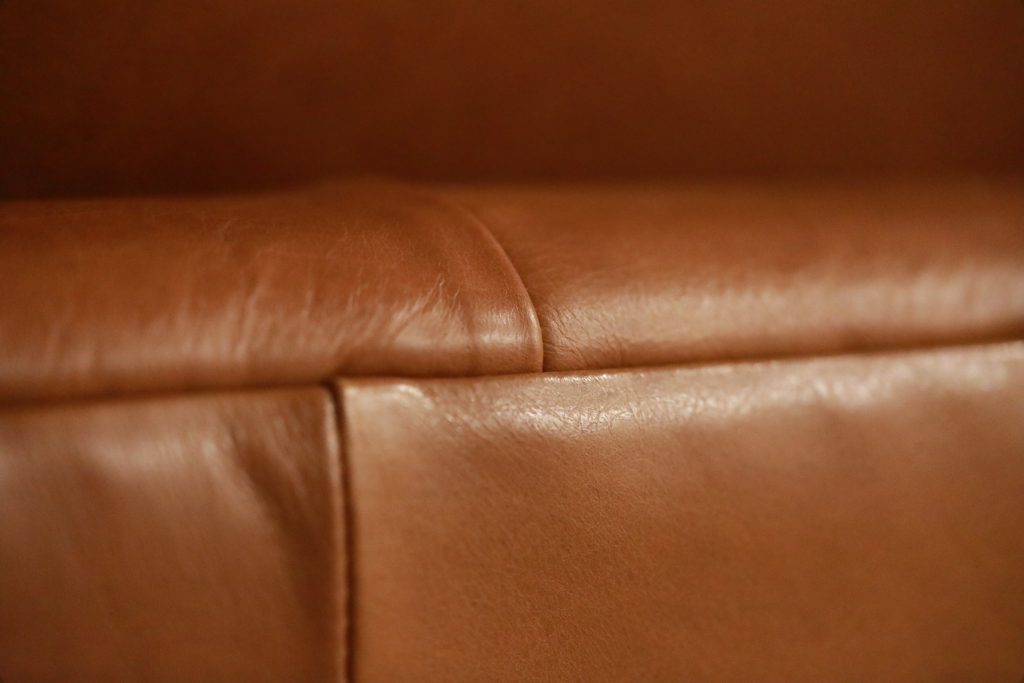
Your sofa would fade when placed in direct contact with light. To prevent certain patches/areas of your sofa from fading away, avoid placing it near a window as much as possible.
4. How Can I Be Sure I Am Making The Best Choice?
Like any other product you’re purchasing, there’s a wide variety of leather furniture available. Sometimes, the best way to determine the quality of the leather furniture is to assess the quality of the individual parts — the frame, springs, seat cushions, etc.
5. Why Choose Leather Furniture?
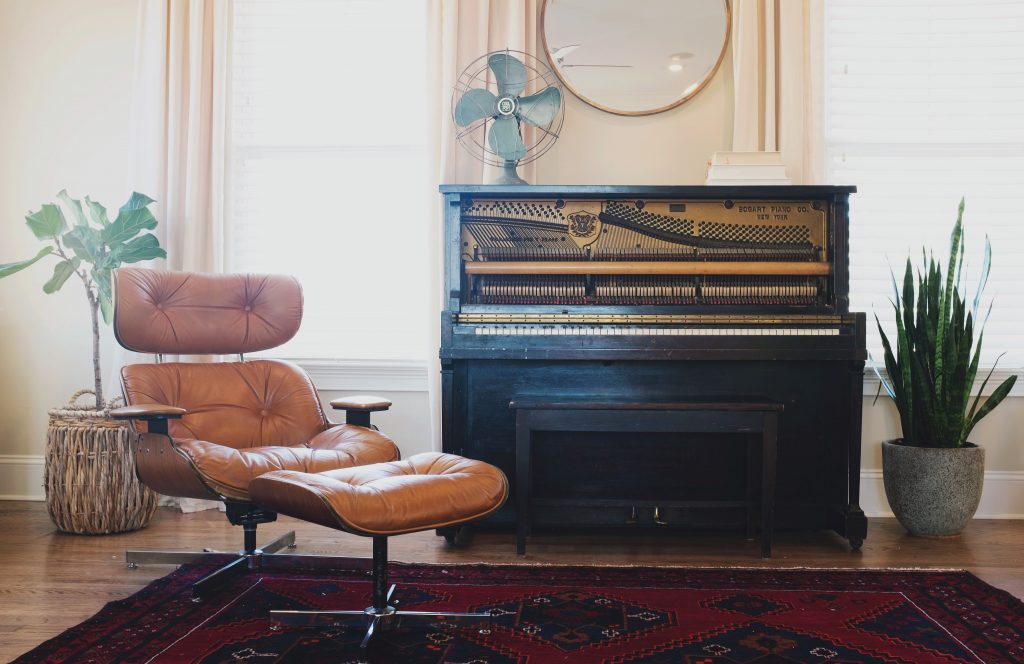
If you have decided to get leather furniture, we guarantee that you won’t regret your decision. Apart from having a long lifespan of over 5 years, leather is also highly durable and easy to clean.
Was this page helpful?
At Storables.com, we guarantee accurate and reliable information. Our content, validated by Expert Board Contributors, is crafted following stringent Editorial Policies. We're committed to providing you with well-researched, expert-backed insights for all your informational needs.

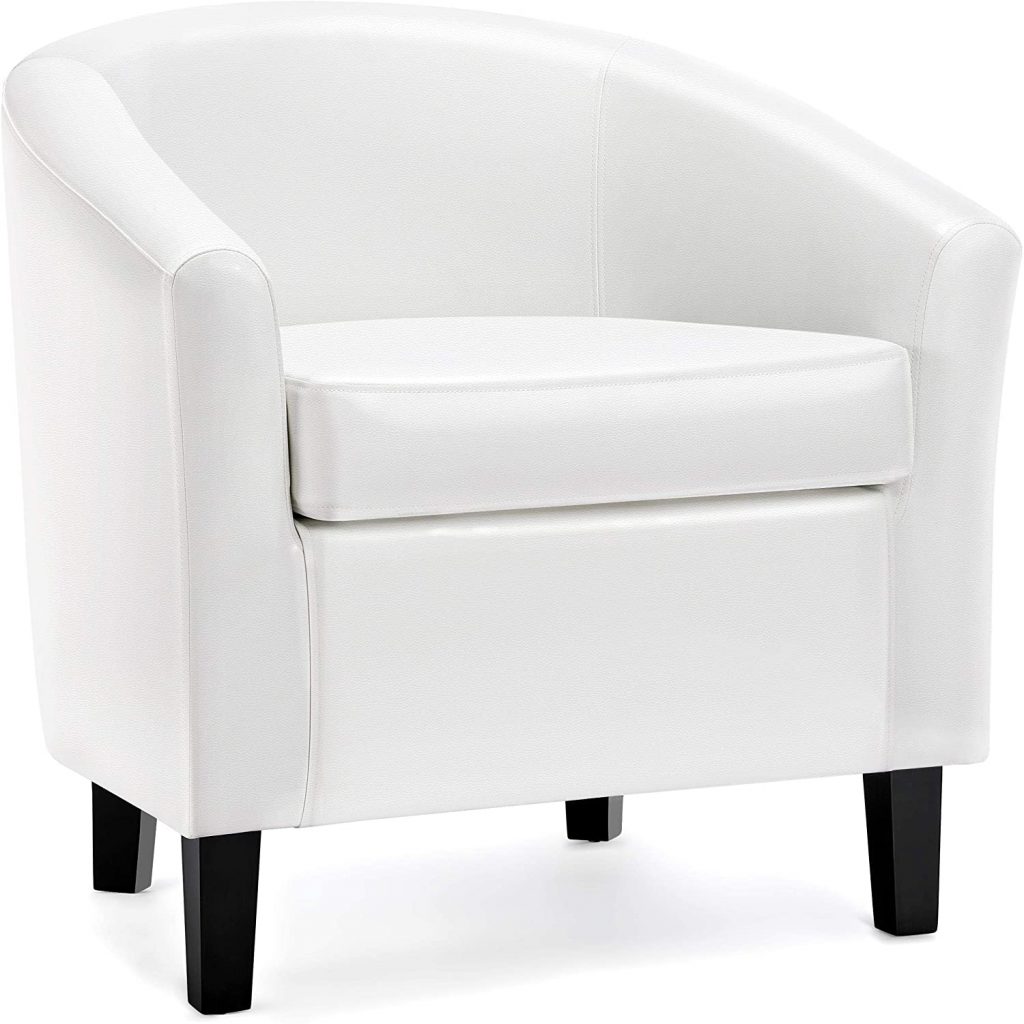
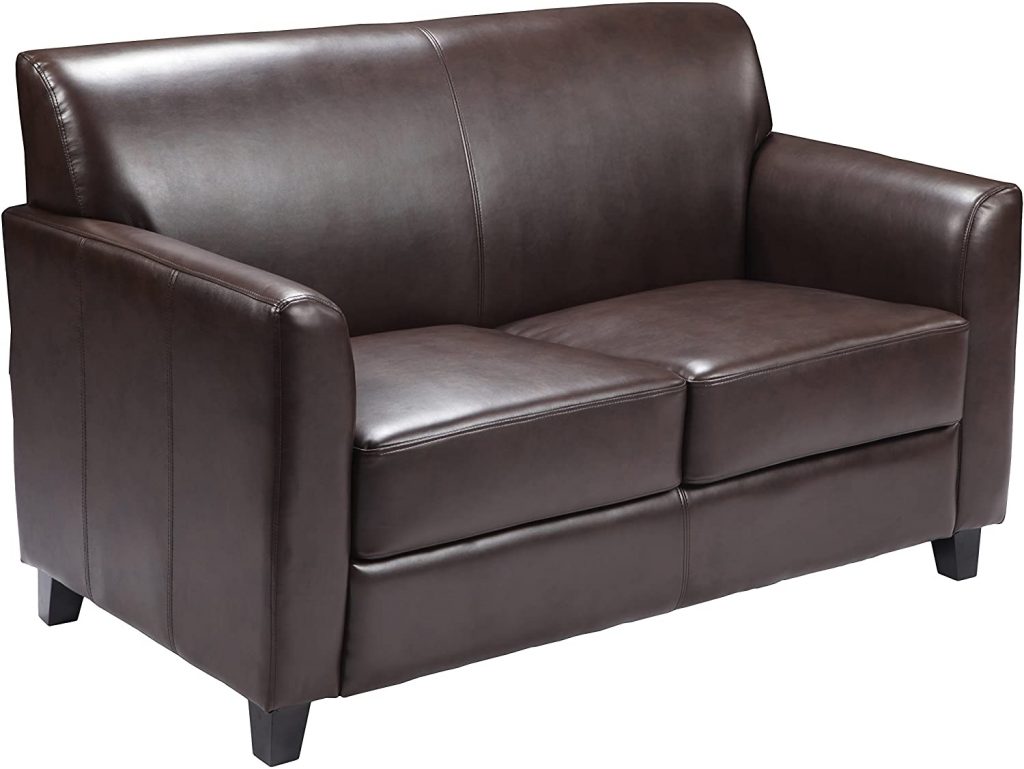

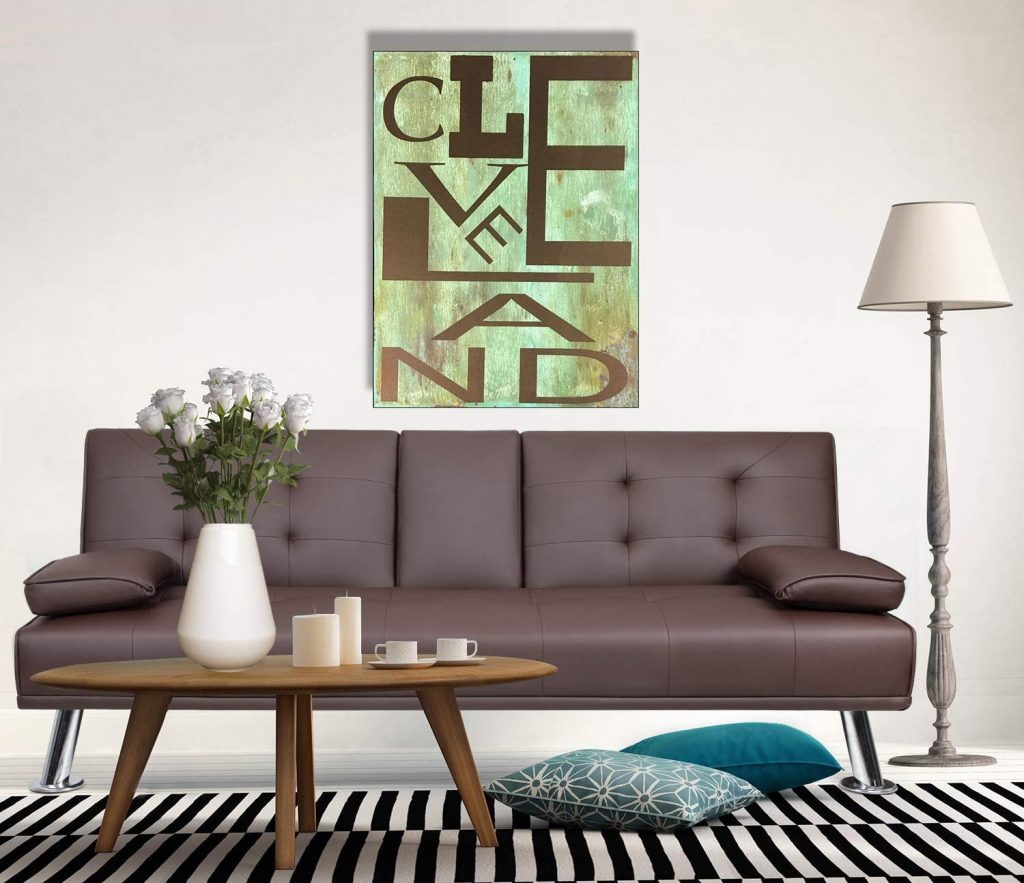
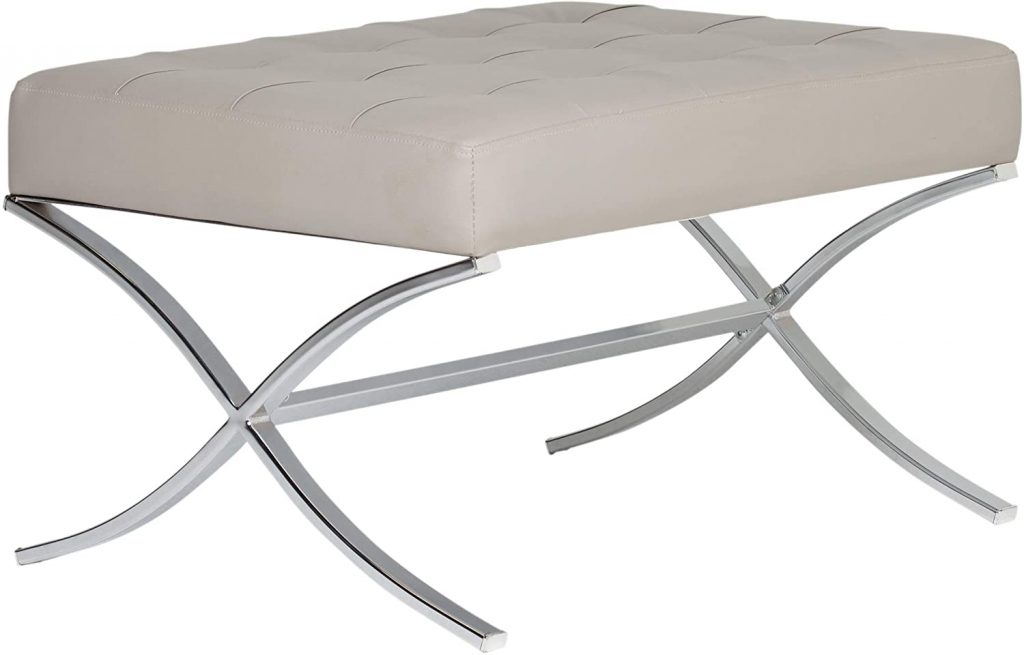
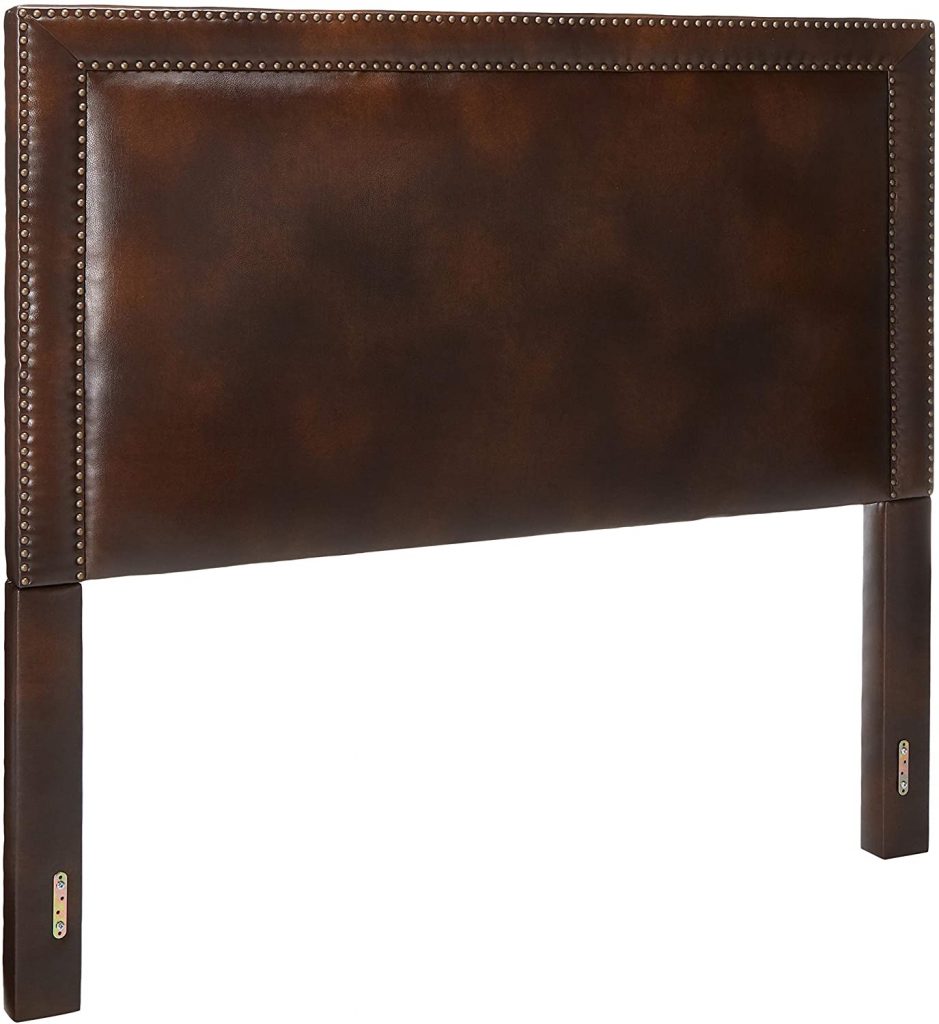
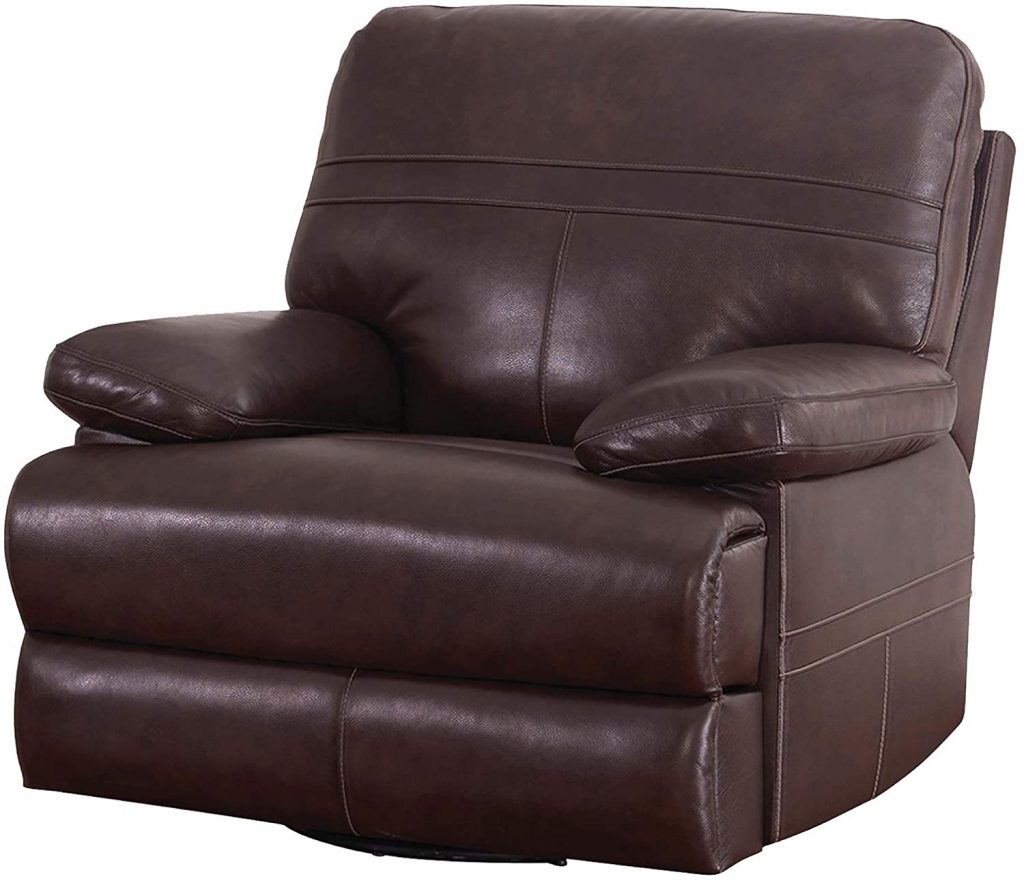
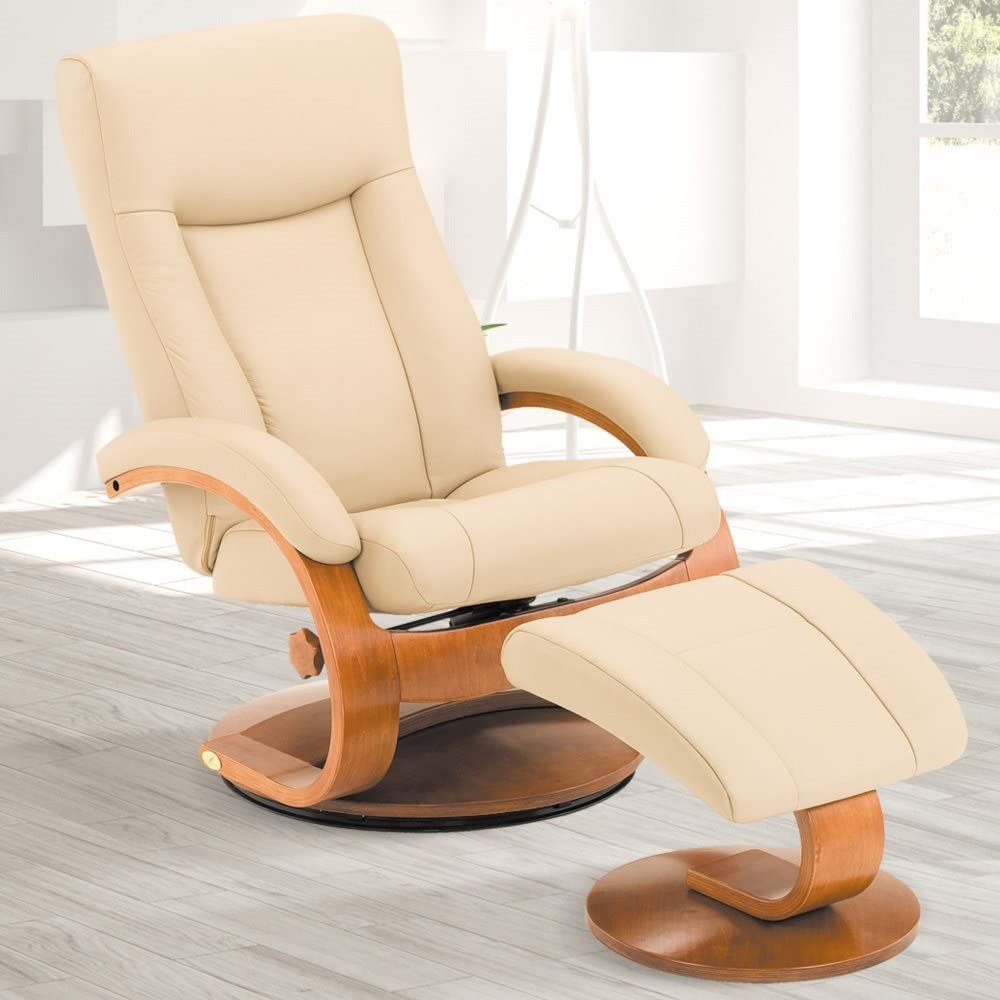
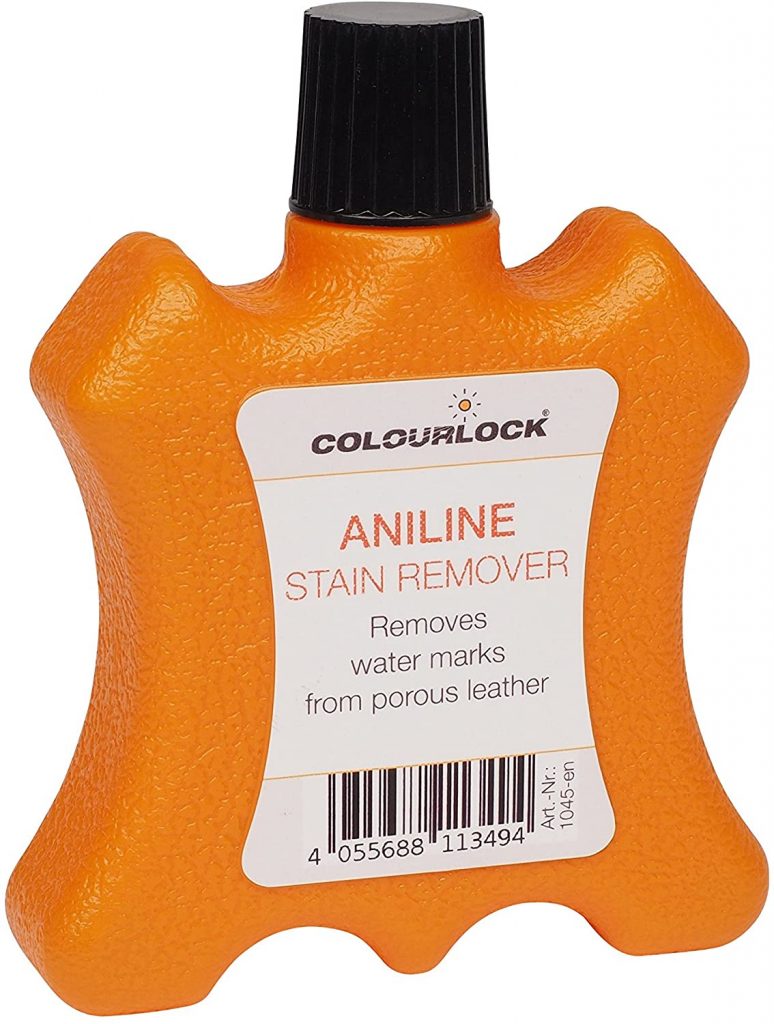

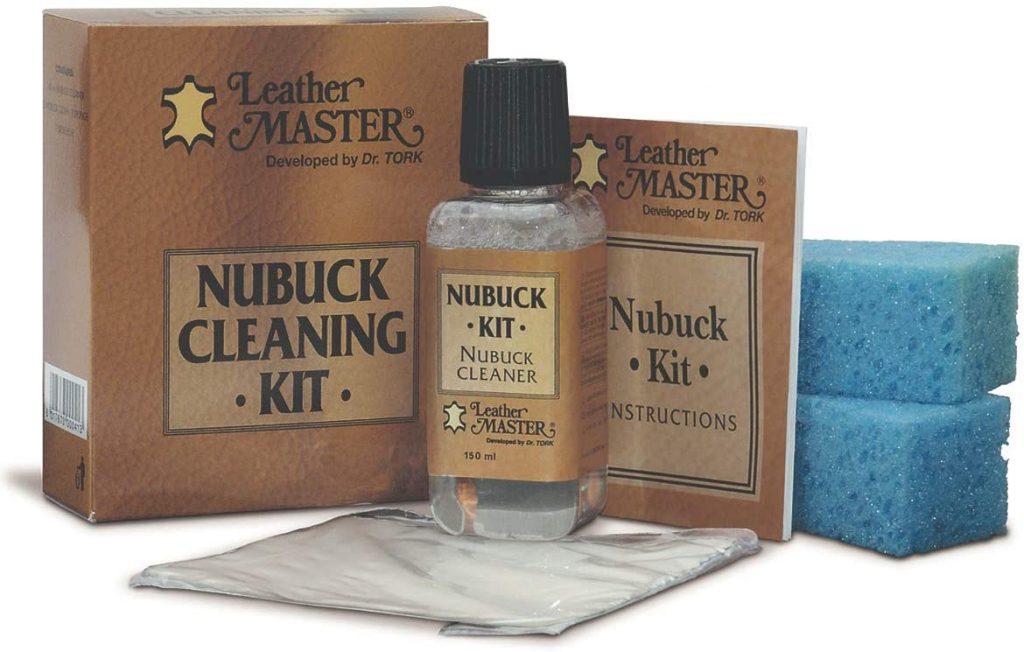
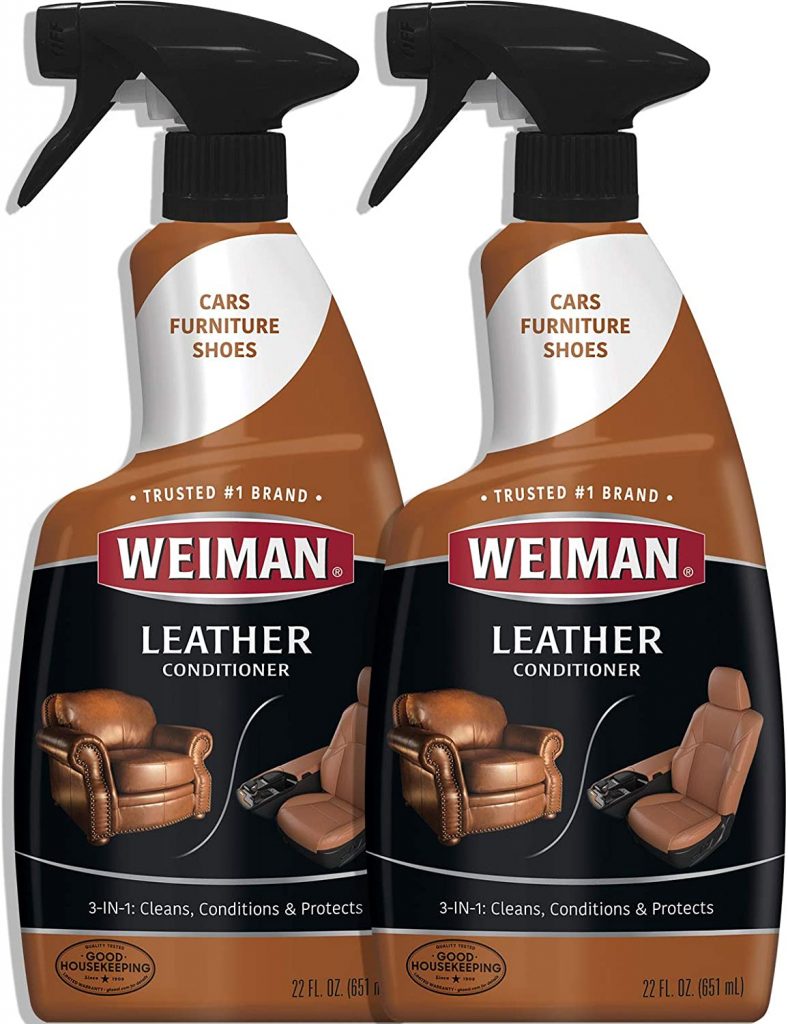
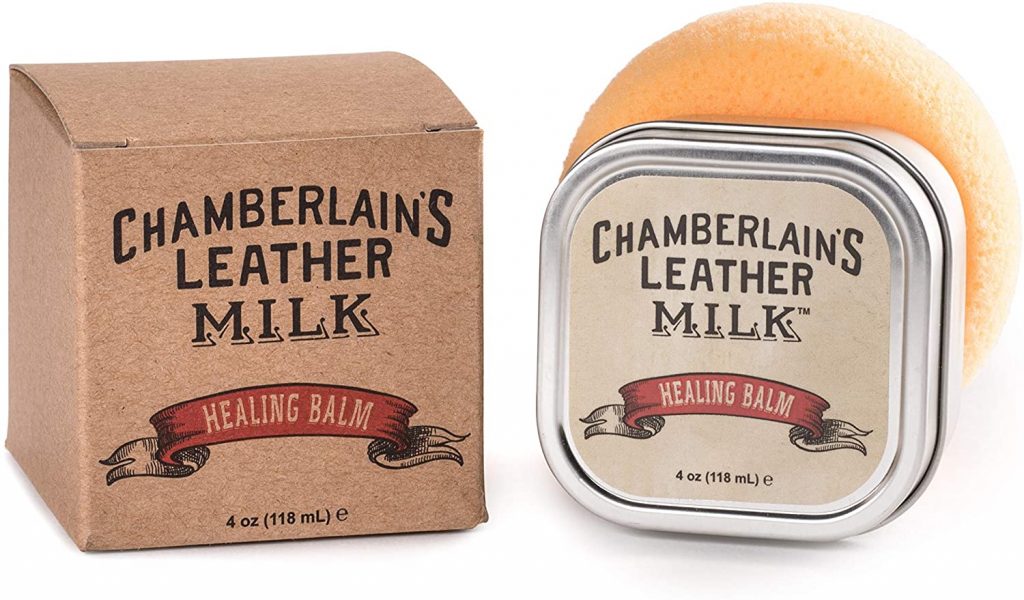
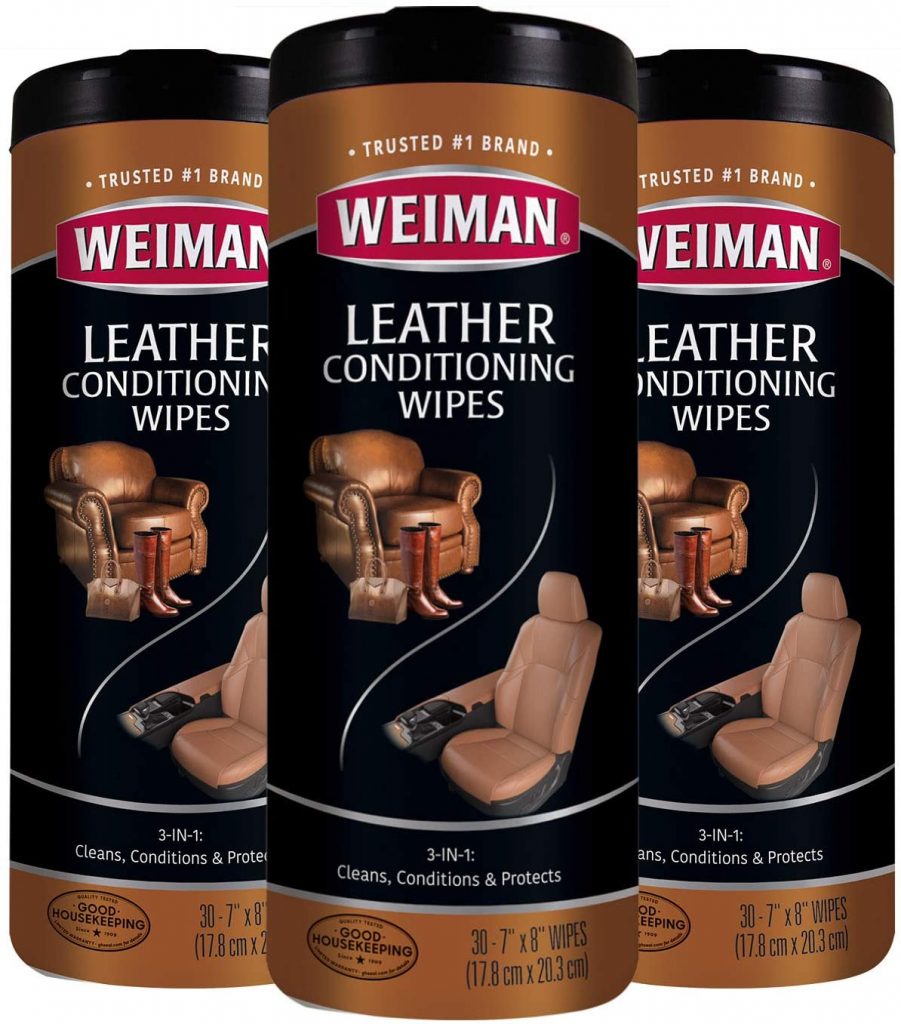

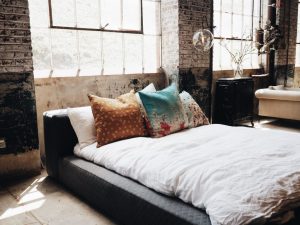


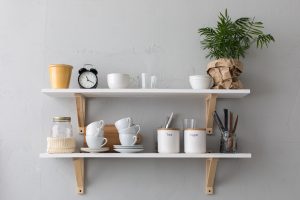
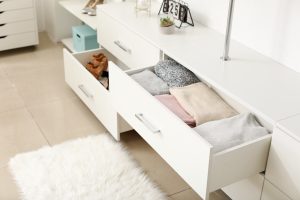
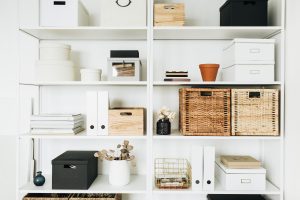
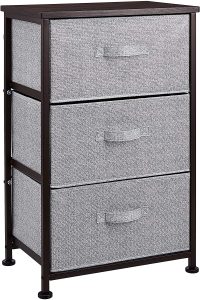

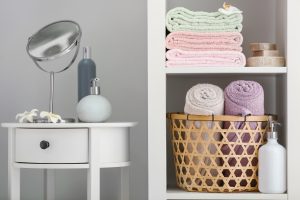
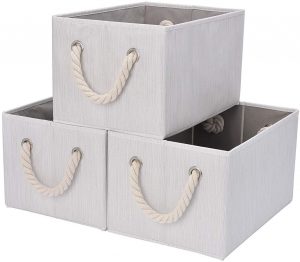


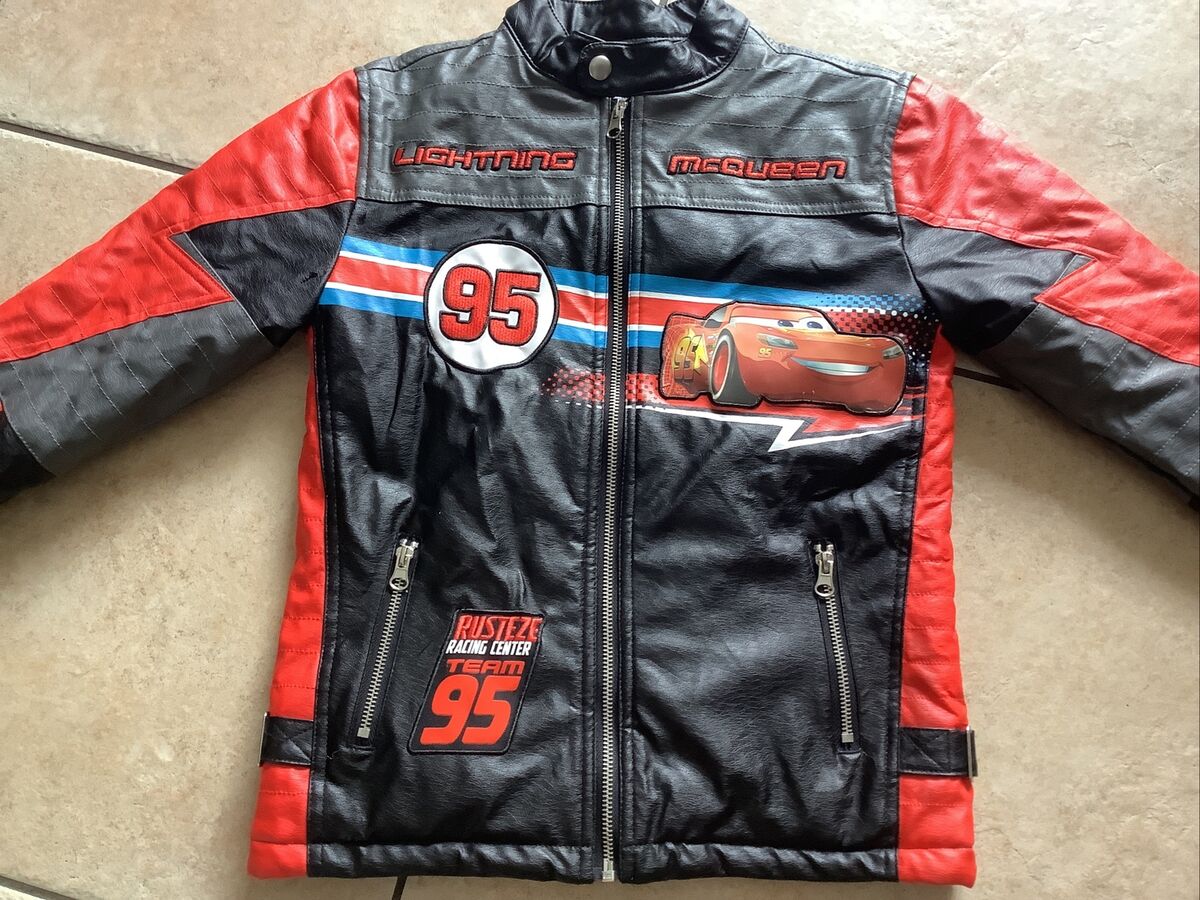
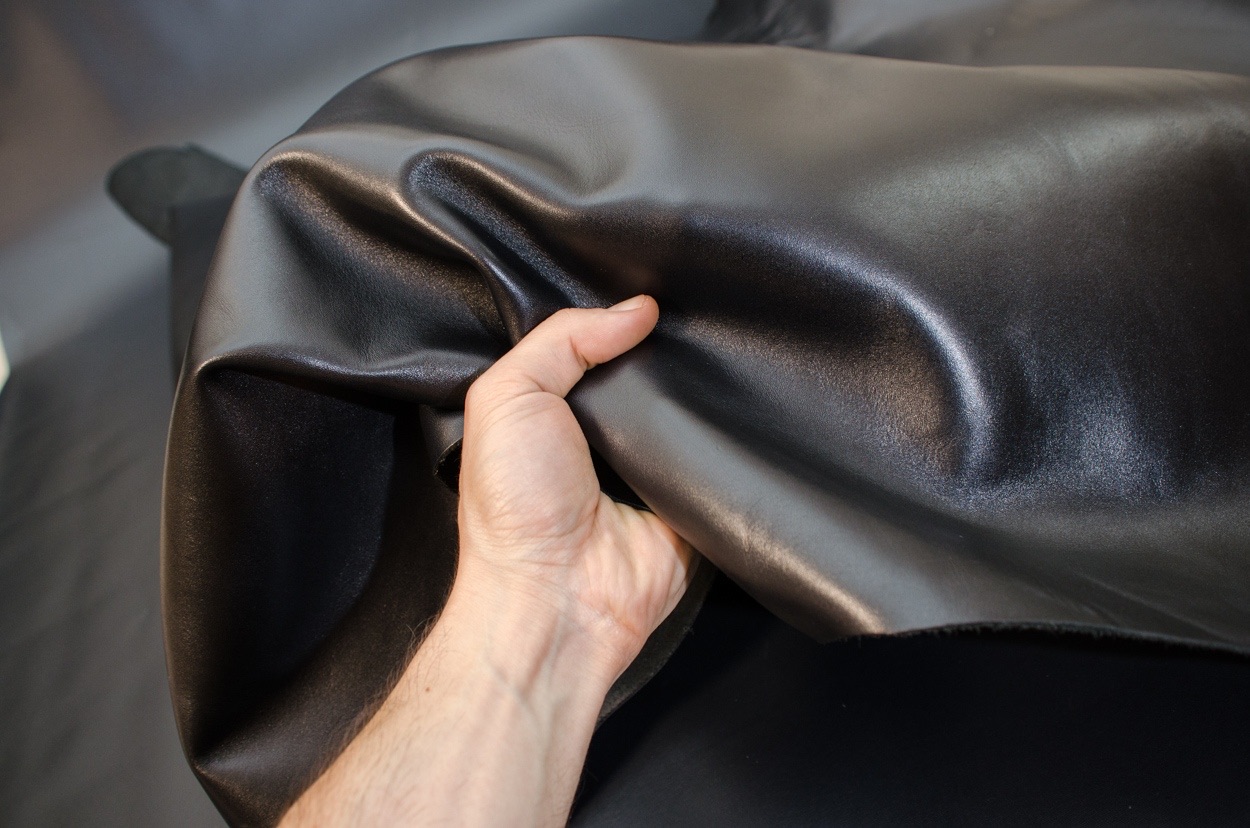
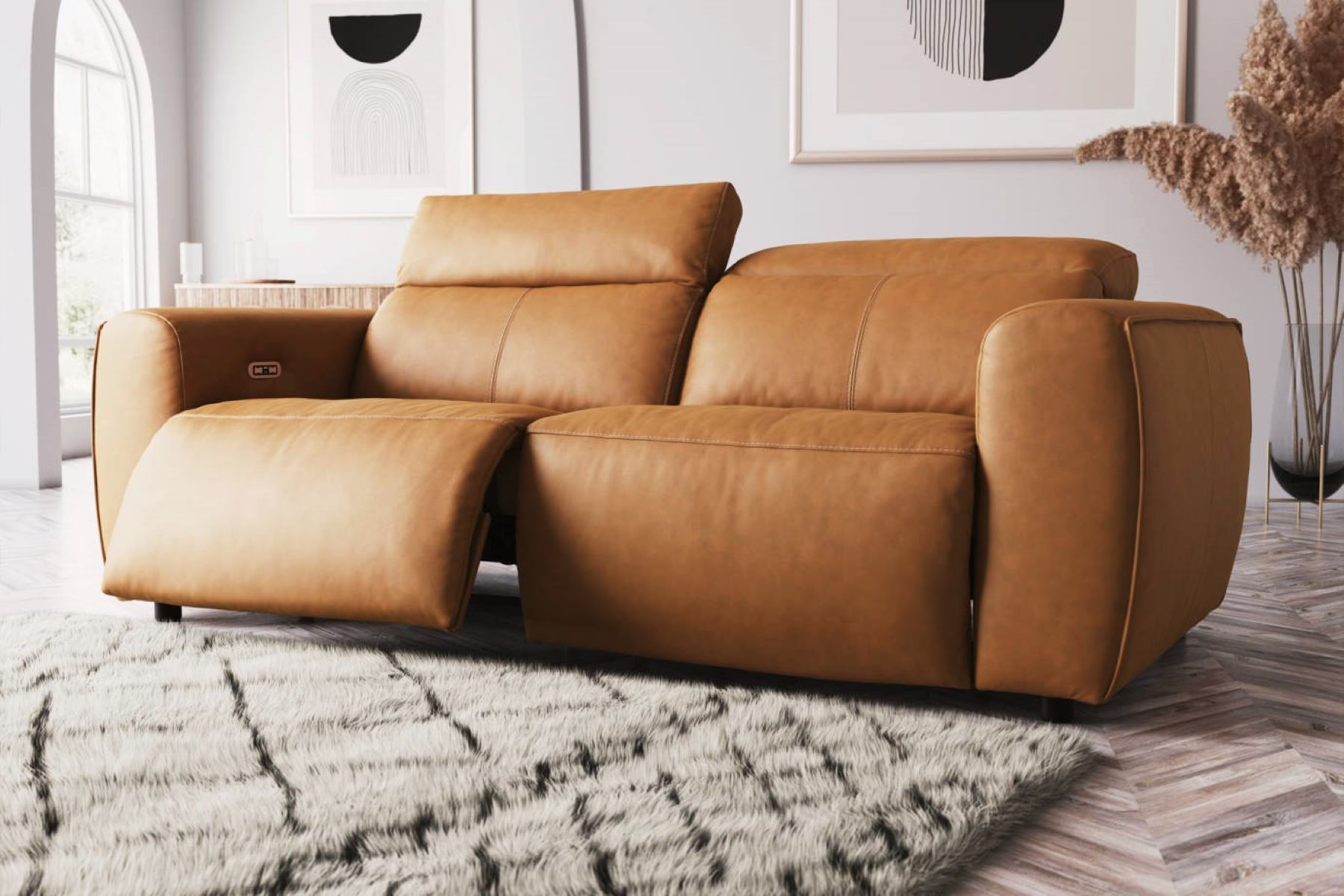
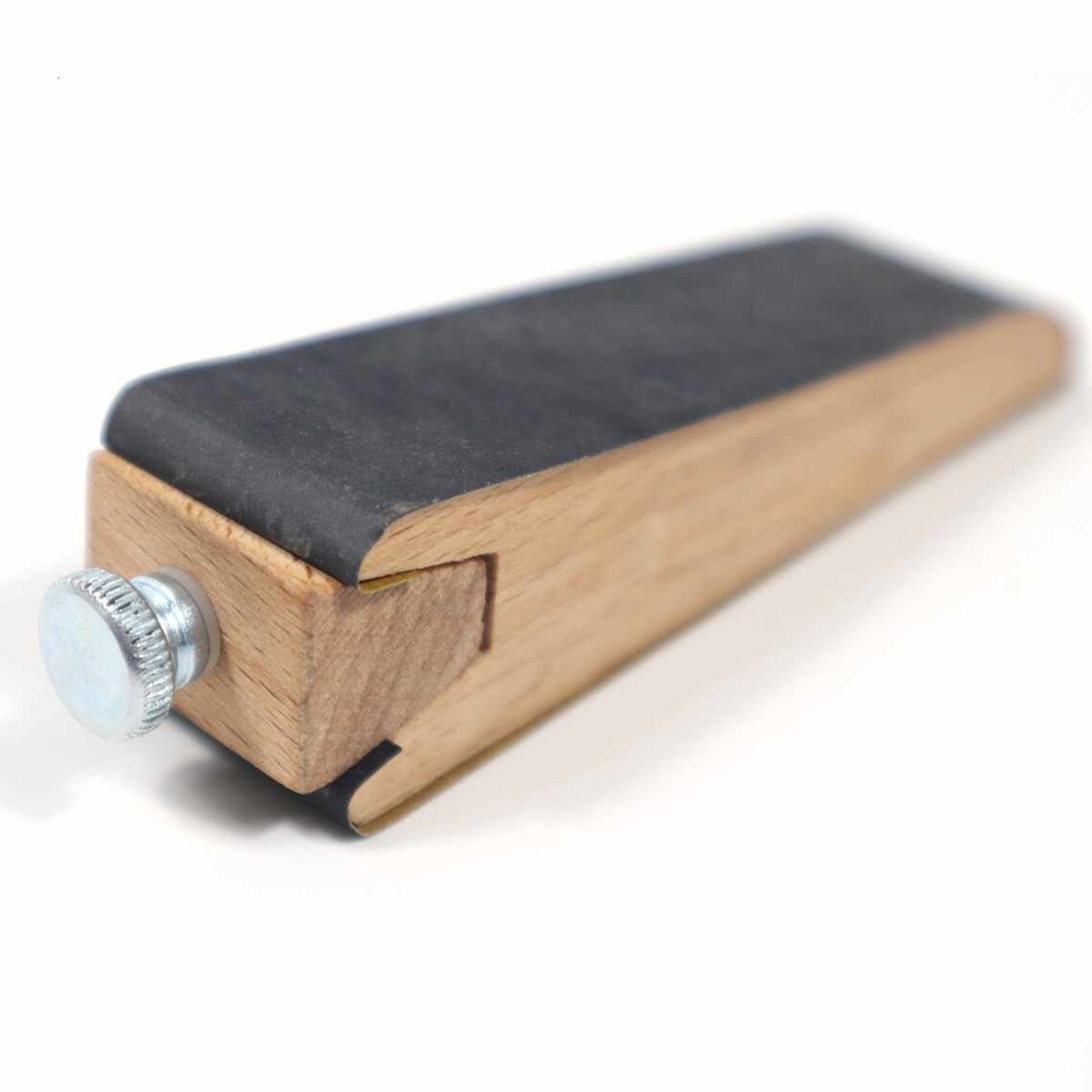
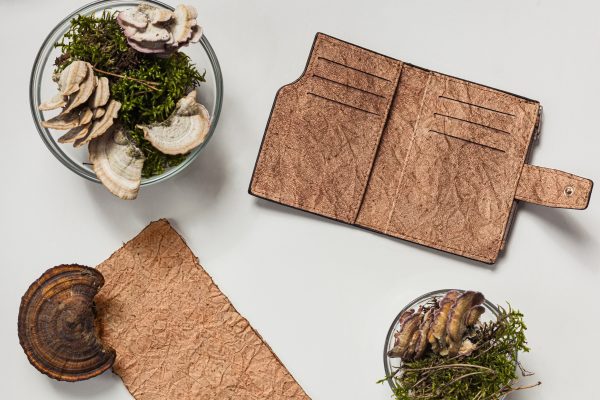
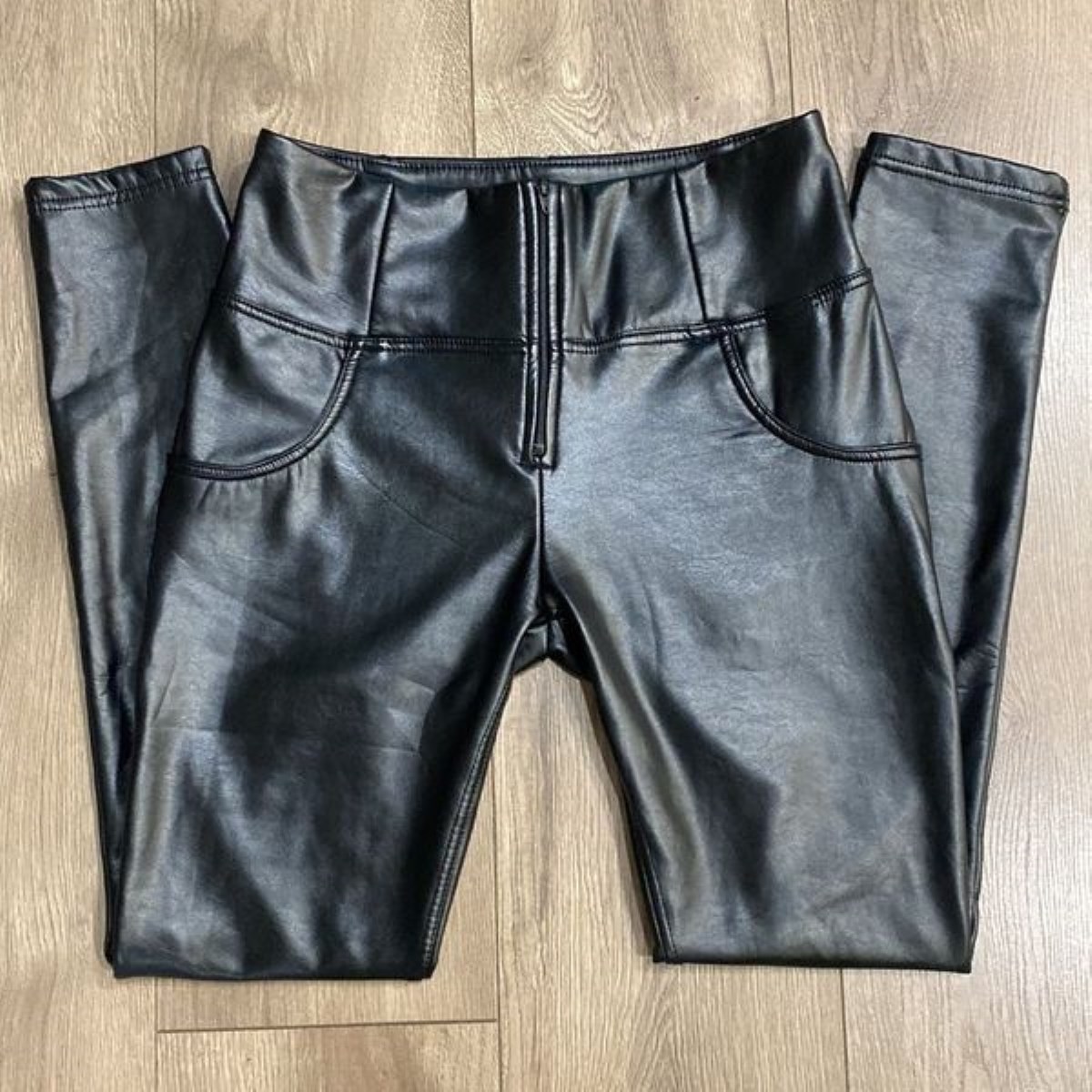
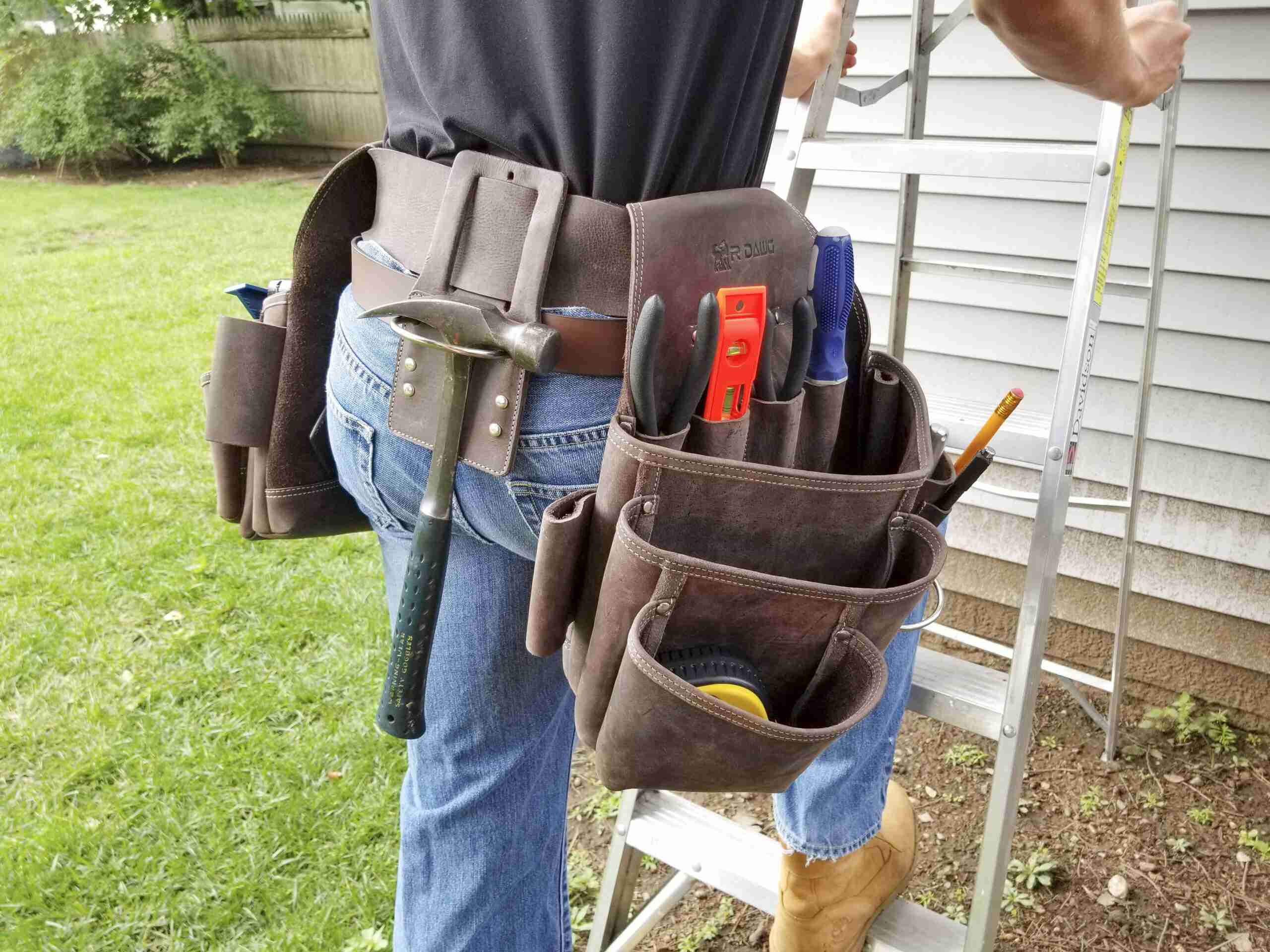

0 thoughts on “Leather Furniture: Choosing & Caring For Yours”